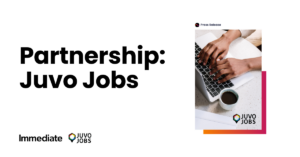
Juvo Jobs and Immediate Partnership: Boost Hiring with On-Demand Pay
Birmingham, AL – July 24, 2023 – Juvo Jobs, the go-to platform for connecting employers with local job seekers, is thrilled to announce a new

Student loans are a stressful burden for college graduates trying to make ends meet. With the right management strategies, it is possible to keep your student loan debt under control. With these three tips in mind, you can stay on top of your student loan payments while still having money left over for other expenses.
When it comes to managing student loan debt, the most important thing is to understand your loans. Knowing the difference between federal loans and private loans is essential.
Federal loans usually come with lower interest rates. Private loans tend to offer more flexibility in terms of repayment options, but you’ll need a higher credit score or cosigner to qualify for them. It’s also important to stay up-to-date on consolidation options and other forms of assistance offered by the government or through private lenders.
Having a full understanding of the type of loan you have can help guide your decisions when it comes time to repay it. Knowing which repayment plan is best suited for your needs will take some research – but it’s worth taking the time to look into these options thoroughly before making any final decisions. Additionally, if you find that one loan carries especially high-interest rates or other unfavorable terms, consolidation may be an option worth looking into as well.
It’s critical that borrowers understand their student loan situation inside and out before deciding how best to proceed with repayment! By doing so, they can make sure their debt is manageable and avoid any unpleasant surprises down the road when the bill comes due. To track this, you will need to start by making a list of all your student loans. This list should include the lender, loan balance, interest rate, and minimum monthly payment.
Creating a budget is essential when it comes to managing your student loans. Not only will it help you determine how much money you can afford to spend on loan payments each month, but it will also help you save money and avoid taking on additional debt. Here are tips for creating an effective budget:
Putting together your list of student loans along with your budget will help you create a debt snowball that can help you pay off your student loans in a systematic and efficient manner. Remember, it’s important to continue making the minimum payment on all of your loans (even the ones you’re not focusing on) to avoid late fees and negative impacts on your credit score. Here are the steps to create a debt snowball for student loans:
It’s okay to ask for help! The idea of student loans overall is an overwhelming topic for new graduates. No one really has it all together, even though it appears people may have made substantial progress in paying off their loans. It’s hard asking for help when you feel like you are “already too far gone.” If you are struggling to manage your student loan payments, know that there is help available. Most lenders offer a variety of options and assistance programs to help borrowers make their payments.
If you are a recent college graduate or employ young professionals, learn more about our free-to-employer financial wellness benefit by booking a discovery call here.

Birmingham, AL – July 24, 2023 – Juvo Jobs, the go-to platform for connecting employers with local job seekers, is thrilled to announce a new

Empower your employees with Immediate’s on-demand pay solution, helping them safeguard their credit health by facilitating timely bill payments, managing emergencies without accruing debt, and